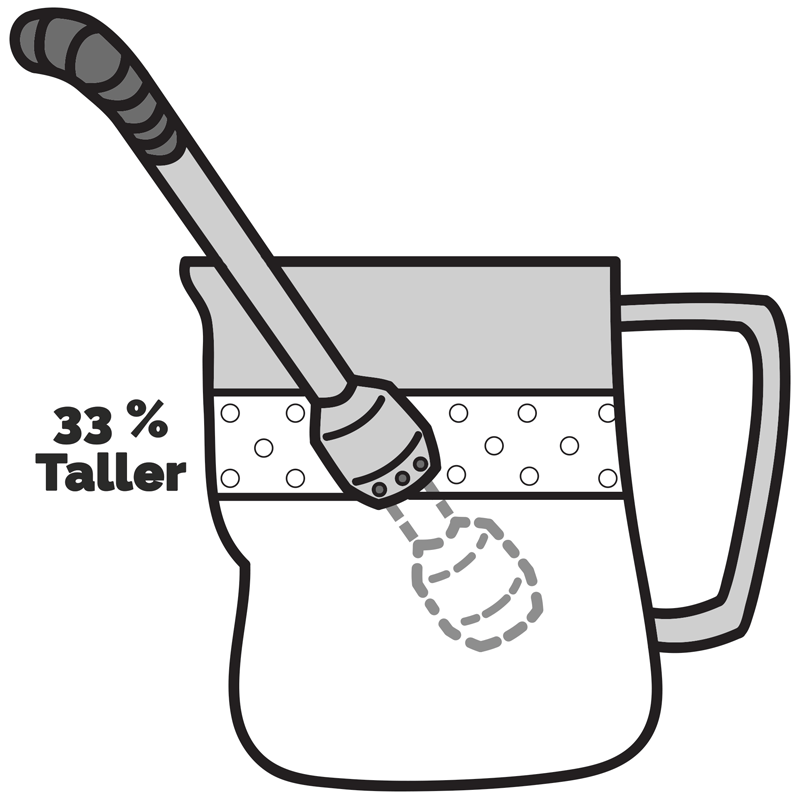The Two-Part Heuristic
Making Microfoam – A Two-Step Guide to Producing Great Microfoam
We employ this technique to texturise (aerate) milk, so it is suitable for making latte art whilst also creating a voluptuous mouthfeel across the whole range of milk-based drinks. This works for every milk drink on the menu except the cappuccino (see Lesson 6.4). Making microfoam is a two-part process:
- Entrain the air into the milk before it gets warm.
- In doing so, increase the milk volume by a factor of one-third.

It makes no difference where you position the steam wand in your milk in terms of its horizontal placement. It can go close to the edge of a milk pitcher, or it can go in the middle, whatever you’re comfortable with. Nor does the angle of your steam wand matter.
The vertical position of your steam wand does matter, however. If the wand is deeply submerged, you won’t entrain air into the milk; you’ll only add heat and some water as the steam condenses. If the steam wand is more than 1 millimetre above the surface of the milk, the extreme turbulence created in the milk by the injection of steam will make it spray all over you and the benchtop.
When operating the steam wand, never draw the tip away from the surface of the milk. Position the steam wand so it is ‘kissing’ the surface of the milk as you add the air. The incoming steam pressure must be sufficient to tear pockets of air into the milk. You will hear a hissing noise as the air is entrained into the milk. But if you don’t add enough air or you have not opened the steam wand valve enough, you will hear a high-pitched squealing noise.
Videos: How to steam milk
Aeration Targets
As soon as you have achieved a one-third increase in milk volume,